Cheese is the future for Pleasant Lane Farms. The Fryes are building a creamery to benefit their farm and other area dairies. The cheese will make them more money for their milk. They’ll make cheese for other farms when they have time. That extra profit will support more Fryes coming into the family business.
“They wanted to keep farming,” Ralph Frye said, of his sons, Jason, Todd and Chad Frye. “And the numbers aren’t there to take care of multiple families by milking 40 cows and doing nothing else.”
The creamery is just the start of a transformation for the Westmoreland County farm, owned by Ralph and Ann Frye. They’re future-proofing it in a way that should keep the land around for generations to come. Pleasant Lane Farms will soon be a destination for people of all ages to buy farm fresh products, hold meetings and take tours to learn about dairy farming from start to finish.
But, hopefully, it’ll also be a place for future Fryes to land, when they’re ready.
“I don’t expect my kids to go from high school into dairy farming,” Jason Frye said. “I expect them to go have a career for a decade … then make the same decision I did, that life was better on the farm.”
In bloom
Diversification is the way forward for some dairy farms. For some, it’s making value-added products from their milk, like cheese, butter and yogurt. Others cash in on the agritourism boom or raise other livestock.
The value of food sold directly to consumers increased from $1.3 billion in 2012 to $2.8 billion in 2017 in the U.S., according to data from the U.S. Department of Agriculture’s Census of Agriculture. Pennsylvania and Ohio were among the top 10 states for direct-to-consumer sales, the USDA’s 2015 Local Food Marketing Practices Survey shows. Farm income from agritourism and recreation services increased from $704 million in 2012 to nearly $950 million in 2017.
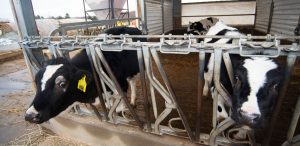
On top of making cheese, the Fryes are designing their farm, in Latrobe, Pennsylvania, to be open to the public. The building that holds the creamery also has a classroom and store. They’ll be able to host cheesemaking classes, 4-H meetings, tour groups and other gatherings.
Once the cheese plant is up and running, there are plans to upgrade the way they milk and house their cows. In the creamery building, there is an area set aside to install robotic milkers. At the back of the building is land prepped for a free-stall barn. There’s actually room for two robotic milkers, should they decide to grow the herd, Jason Frye said.
The whole process will be out in the open and viewable by the public. The cheesemaking room has glass viewing areas. The robotic milking area has a biosecure walkway, as will the future free-stall barn.
“We want to be open, not just that they can come in and see cheese being made and cows being milked, but the whole process,” Jason Frye said. “I think if you’re doing it right, you have nothing to hide and nothing to fear and everything to gain.”
Semi-charmed life
For the Baker family, in New Waterford, Ohio, diversification looked like bottling their own milk. It grew from chocolate, strawberry and whole milk into a line of wildly flavored milks and other dairy products. Kevin Baker said bottling their milk enabled them to stay in the business.
“If I didn’t do this, I wouldn’t be milking cows now,” he said.
While his family’s roots are in dairy, he bought his own farm with his wife, Deb, in 1999. It was Baker’s dream to bottle his own milk. He thought that was a more viable option to keep the farm going and allow his four children to join the operation, rather than expanding the herd.
The idea started to become a reality when his daughter, Kasey, went to Ohio State University Agricultural Technical Institute for dairy management and production. She even did a project in college, developing a business plan for a milk bottling plant.
They broke ground on the building, a milk plant and a store, in 2010. They started bottling milk in July 2011.
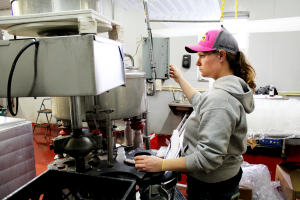
It started with three flavors and selling the milk from the on-farm store. Now their products, like milk and drinkable yogurt, are in more than 50 stores around the region.
They got into the differently flavored milks by accident. Someone forgot to clean the lines between a batch of strawberry and chocolate milk. The result was a chocolate strawberry milk. “We bottled it anyway, and people actually liked it,” Kasey Baker said.
They realized they might be onto something. Kasey Baker found a company that sells different flavorings, so they started trying out more. Blueberry, peach, cookies and cream, chocolate peanut butter … you name it, if Kasey can find the flavoring, they might give it a try.
“It’s fun to have people come into the store and say, ‘When are you going to have butter pecan again?’ because it keeps them coming back,” she said.
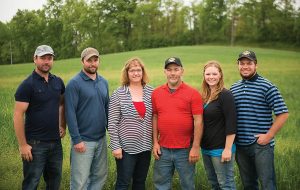
They milk about 90 cows and use about 30% of their milk on farm. The rest goes to Minerva Dairy to make cheese. That helps during the slow times of year.
“It’s a huge help that we can use our own and then use it elsewhere as well,” she said.
Everyone plays a part, but it’s not all milking cows. Kasey Baker and her parents handle the milk plant and the cows. The eldest son, Kurt, works in construction, but his wife, Susan, helps bottle milk too. The second son, Keith, does custom harvesting. The youngest son, Kaleb, raises laying hens and just got into raising pigs. The family also raises their own dairy beef feeders, turkeys and chickens. They sell the meat in the farm store.
Kasey Baker has dreams of her own for the future, now that she’s seen the interest people have in the farm. They host farm tours for the public and host a popular fall breakfast on the farm event. She wants to put in a classroom overlooking the barns to have a more formal space for people to gather and learn.
“It’s not just for myself,” she said. “When I talk about how milk doesn’t have antibiotics in it or rBST, that’s not just our milk. It’s everybody’s.”
In the meantime

The future is important to the Fryes, but so is paying tribute to the past. Their farm is protected by the Pennsylvania Farmland Preservation Program.
Ralph Frye started renting the farm in 1976 when he was 26. He came home after serving in the U.S. Marine Corps and worked in a factory until he was laid off.
Dairy farming was plan B. His family was in dairy farming, so he knew the business. It was tough then, as it is now, but he kept at it. When Ralph Frye got a call from the factory to come back to work, he ignored it.
They finally bought the farm 38 years after they began renting it. After the farm was officially theirs, his sons, who were grown and all working off-farm, began talking about the future.
Jason Frye jokingly said that all they needed was milk that was worth $50 per hundredweight. It sounded crazy, knowing what milk prices are, but he figured out that processing it into cheese can achieve that. The Fryes hired a consultant, Sanitary Design Industries, based in St. Louis, to help them with plant design, process design and market research.

The Fryes plan to make cheddar, Gouda, colby, quark and cheese curds. They’ll use honey, made from Todd’s beehives right on the farm, for one of the cheeses. They hope to be making cheese by spring.
The goal is to divert about 20% of their milk to cheesemaking. The rest will still be shipped to Turner’s Dairy, their longtime processor.
By Jason Frye’s estimates, they can net at least $50 to $60 per hundredweight on their milk by turning it into cheese and selling it for at least $8 a pound. That includes the processing costs.
“We will generate more cash flow than what we would’ve been getting for 100% of milk going to Turner’s,” he said.
Cumbersome
On-farm milk processing is not for everyone. There are huge start-up costs. For the Fryes, this leap into the future was made possible by the Pennsylvania Dairy Investment Program, a new program that awarded $5 million in grants to 29 projects last spring.
The Fryes received two of those grants: $286,744 to equip the creamery and $77,338 for marketing costs and building the classroom and tour facility. They also had to take out a loan to pay for the facility.
The Bakers were able to do much of the building construction and installation themselves, taking their time to do it as they had the funds, not taking on any additional debt.
The equipment is costly and hard to find. The Bakers purchased theirs used from a farm in eastern Pennsylvania. The Fryes got their lightly-used cheese vat from Nebraska. One cheese vat can cost upward of $50,000.
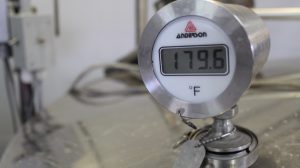
That’s just getting the stuff to make the other stuff. What about selling it? You can’t just make cheese and expect people to flock to your farm to buy it.
“The first thing I ask people is have you done your market research?” Jason Frye said.
People have already asked him how to get into cheesemaking. He wants them to know it’s not as easy as it looks. “Then, what type of product do you want to make? What is the market for that? Then, do you have the acumen to market into that demographic?” he said.
Being a farmer is one thing. Being a salesman, a customer service representative and a tour guide are other things completely. Not every farmer is cut out for it.
“You’ve got to be a people person,” Kevin Baker said. Baker doesn’t just mean because you’ll be dealing directly with consumers. Once you get into on-farm processing, you’re dealing with more inspectors. It’s helpful to be a good listener and to be responsive.
Are you gonna go my way
Todd and Jason Frye both work off-farm, but they wanted back in for good. Todd Frye will retire soon from the Army National Guard and plans to make the creamery his next career.
Jason Frye works as an executive at a global software technology firm. He moved back to the area a few years ago, but lived for years in Virginia, just outside of Washington, D.C. Compared with the work he does in the tech world, farm work is tangible.

“It really gives you a different appreciation for what it means to do something, to make something and deliver something,” Jason Frye said. “There’s a lot to be said for the satisfaction of being able to look back at a field you just worked on all day, or when crops are up and green. We did that.”
The land is important. But so is the lifestyle, and the responsibility, accountability and integrity that comes with it. Jason Frye wants to protect it and hand it down to his children, if they want it. The creamery is building that bridge from one generation to the next.
“You don’t have to be a 10,000-cow dairy to make it in this industry,” he said.
(Reporter Rachel Wagoner can be contacted at 800-837-3419 or rachel@farmanddairy.com.)


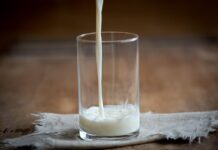











For a 92 yr. old, who was a city kid in Warren, this was a very enlightening story on the dairy farming and it’s future. I had two uncles with about 10 cows and 100 acres. I wasn’t to good at milking and was told not to milk her dry. One cow and I gave up gave. On the one farm, it was a horse, no tractors. Also several riding horses, I liked his Buck-skin the best. Their milk was separated, and butter made as well as cottage cheese. Then on Saturday my Aunt had a butter and egg route in town. I spent quite a bit of time on both farms and had a great childhood.
Thank you very much for such an amazing and educating article. Regards.